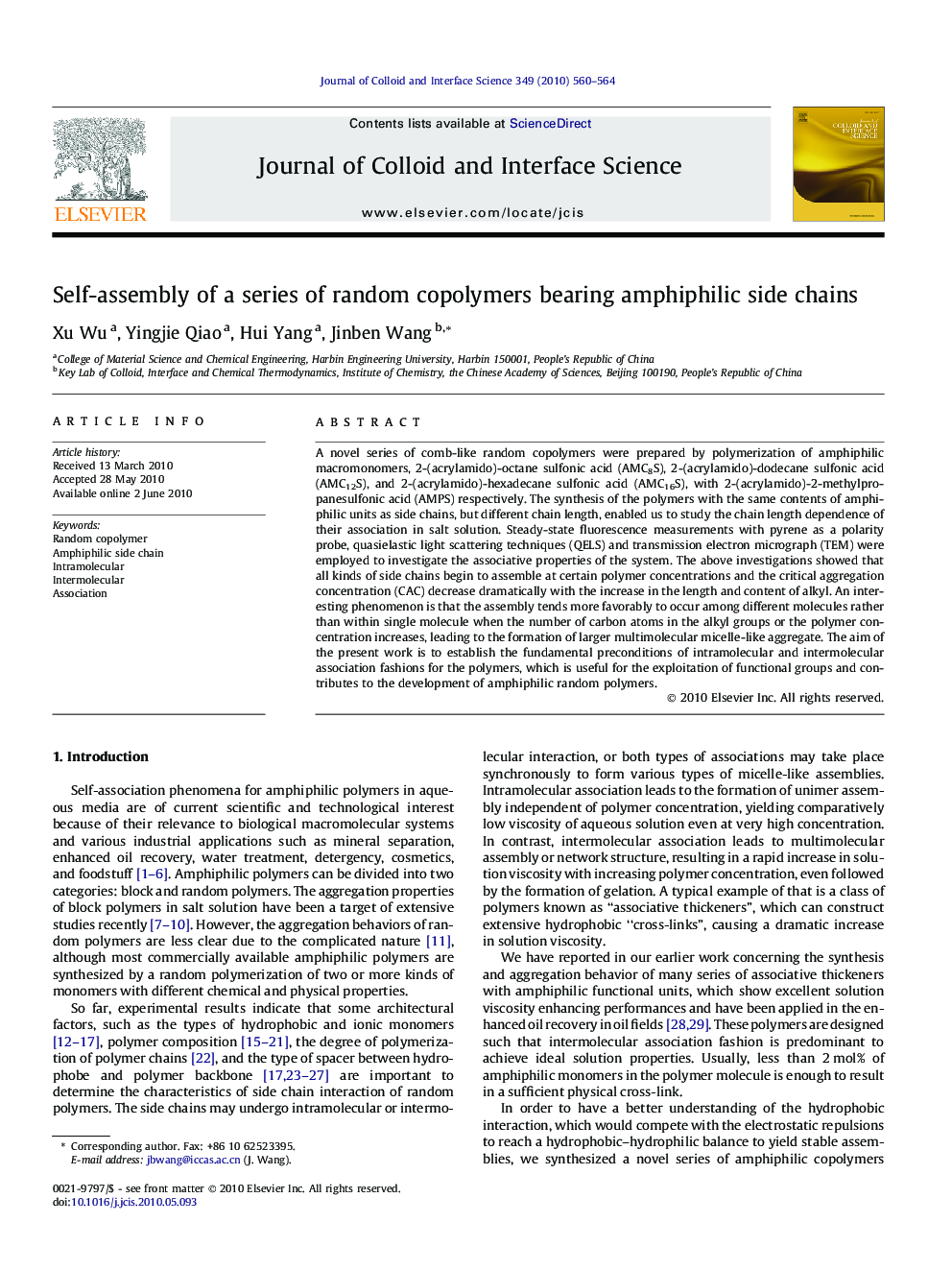| Article ID | Journal | Published Year | Pages | File Type |
|---|---|---|---|---|
| 609342 | Journal of Colloid and Interface Science | 2010 | 5 Pages |
A novel series of comb-like random copolymers were prepared by polymerization of amphiphilic macromonomers, 2-(acrylamido)-octane sulfonic acid (AMC8S), 2-(acrylamido)-dodecane sulfonic acid (AMC12S), and 2-(acrylamido)-hexadecane sulfonic acid (AMC16S), with 2-(acrylamido)-2-methylpropanesulfonic acid (AMPS) respectively. The synthesis of the polymers with the same contents of amphiphilic units as side chains, but different chain length, enabled us to study the chain length dependence of their association in salt solution. Steady-state fluorescence measurements with pyrene as a polarity probe, quasielastic light scattering techniques (QELS) and transmission electron micrograph (TEM) were employed to investigate the associative properties of the system. The above investigations showed that all kinds of side chains begin to assemble at certain polymer concentrations and the critical aggregation concentration (CAC) decrease dramatically with the increase in the length and content of alkyl. An interesting phenomenon is that the assembly tends more favorably to occur among different molecules rather than within single molecule when the number of carbon atoms in the alkyl groups or the polymer concentration increases, leading to the formation of larger multimolecular micelle-like aggregate. The aim of the present work is to establish the fundamental preconditions of intramolecular and intermolecular association fashions for the polymers, which is useful for the exploitation of functional groups and contributes to the development of amphiphilic random polymers.
Graphical abstractIncrease the number of carbon atoms in the alkyl group or polymer concentration can lead the association of side chains to occur more preferentially among different molecules.Figure optionsDownload full-size imageDownload high-quality image (275 K)Download as PowerPoint slide
